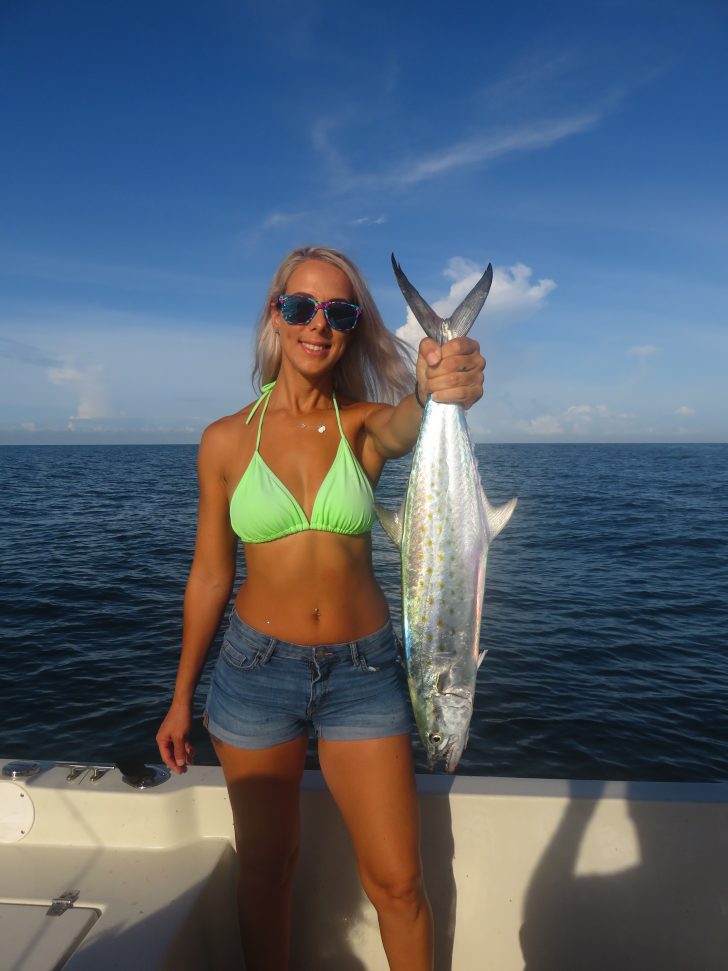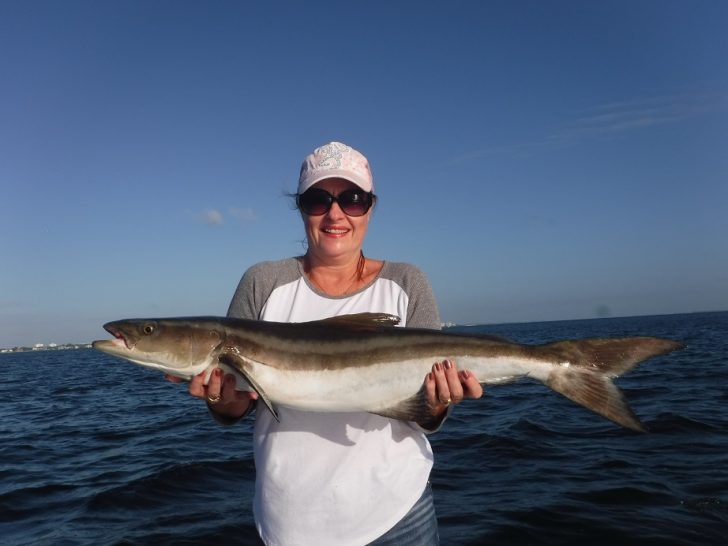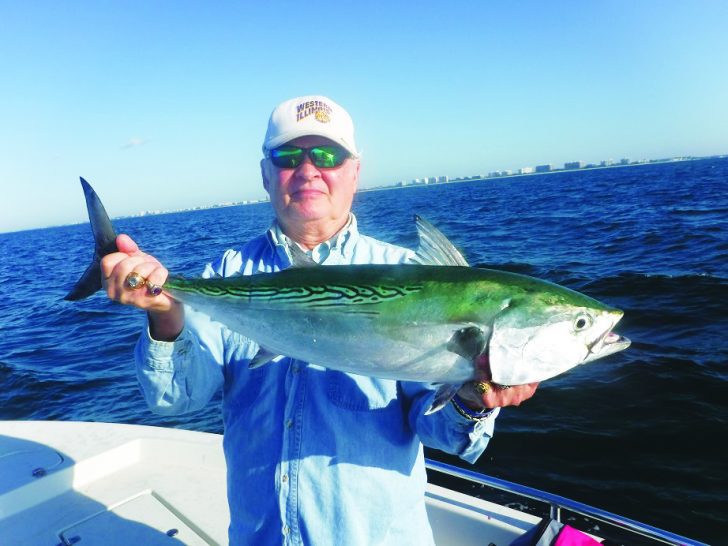Capt. Jim Klopfer
Every fall, the West Coast of Florida experiences some world class fishing. Hordes of bait fish migrate south as the water temperature slowly drops. Game fish such as false albacore, Spanish mackerel, king mackerel, sharks, and other species are right on their heels. This gives anglers with small boats and skiffs the opportunity to enjoy some terrific fishing action! Anglers can employ several different techniques when pursuing these species. Perhaps the most exciting approach is to target “breaking fish”. These are fish that are actively feeding on the surface. Any time there is a visual aspect to fishing, it adds to the experience. It is great fun casting lures and flies, knowing that a strike is virtually ensured. Anglers run the coastline a mile or so off the beach in search of birds and fish. Once spotted, the boat is ideally positioned a long cast up-wind of the fish. The best lures match the size of the forage. The bait can be as small as a 1” glass minnow or a hand sized threadfin herring. Spoons and plugs are the top lures, along with jigs.

Anglers can certainly use live and cut bait as well. This is most often done in conjunction with chum. Anchoring over a ledge, reef, or other piece of structure and then chumming and free lining a live bait or chunk of fresh cut bait will produce plenty of fish. Frozen chum works fine, live bait as chum is even better. Live bait can be a cast into schools of breaking fish if they stay up and the angler can get close enough. Shrimp and bait fish are the predominant baits. Long shank hooks will help reduce cut-offs.
Capt. Jim Klopfer
(941) 371-1390




